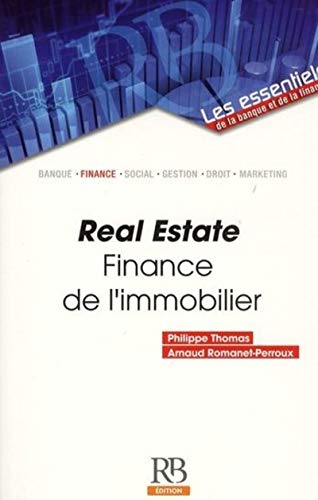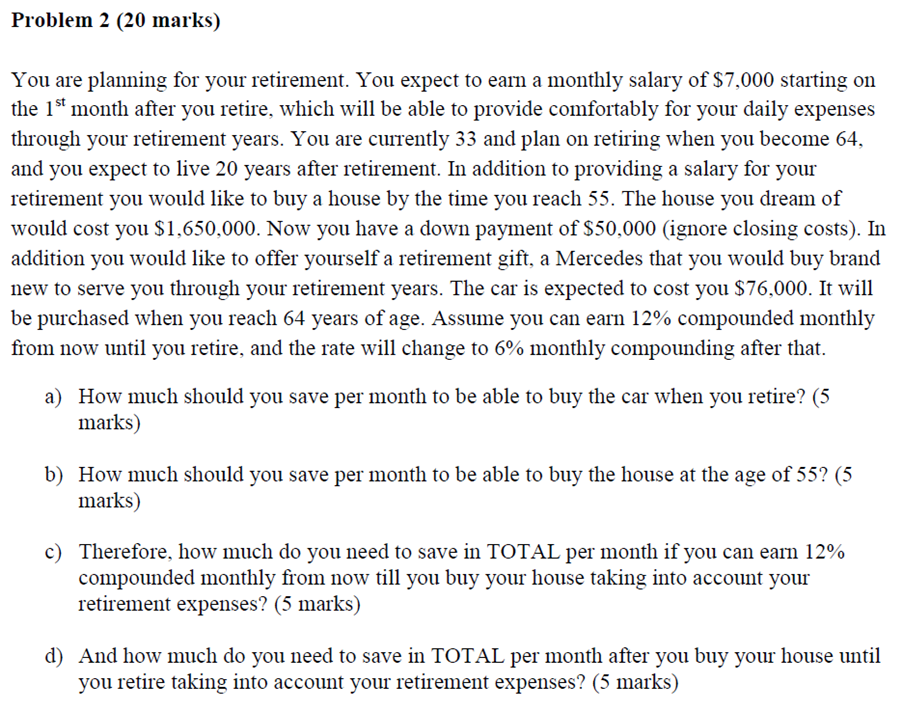
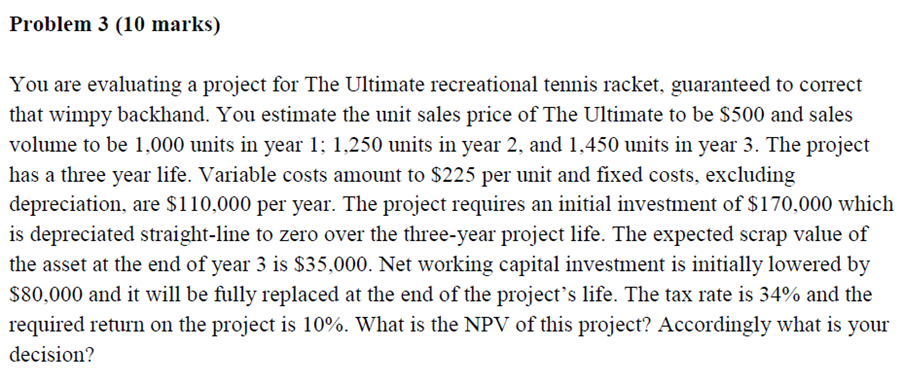
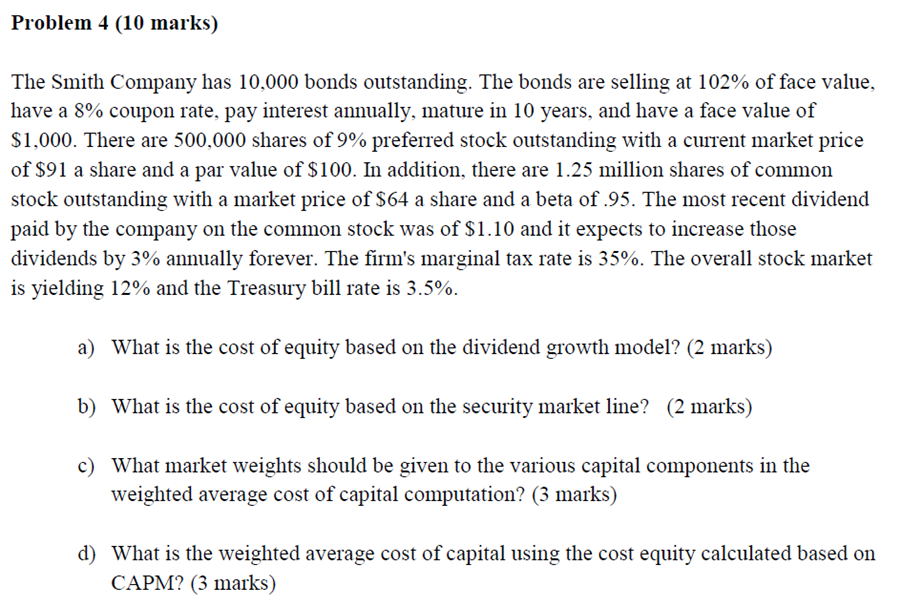

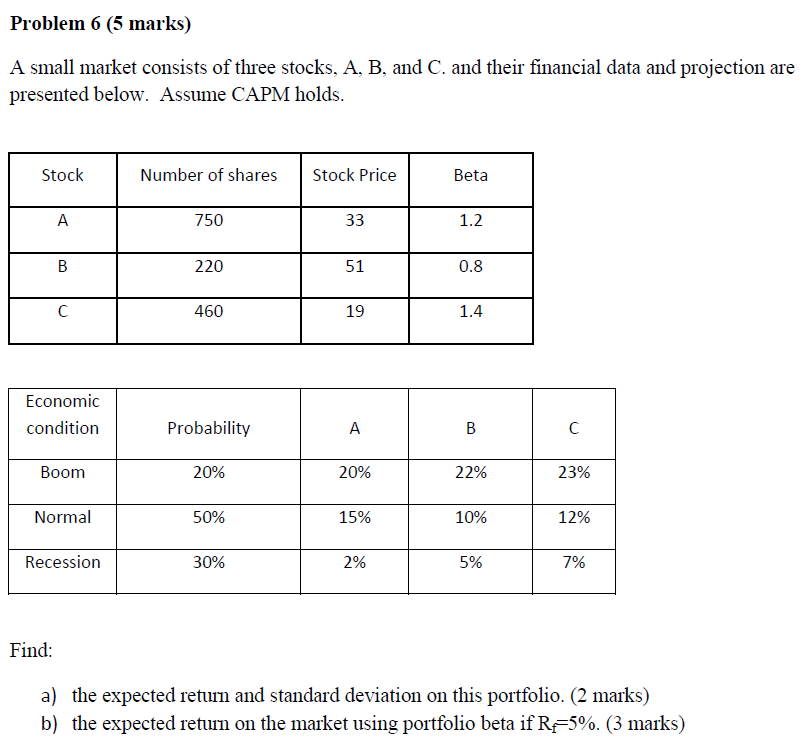
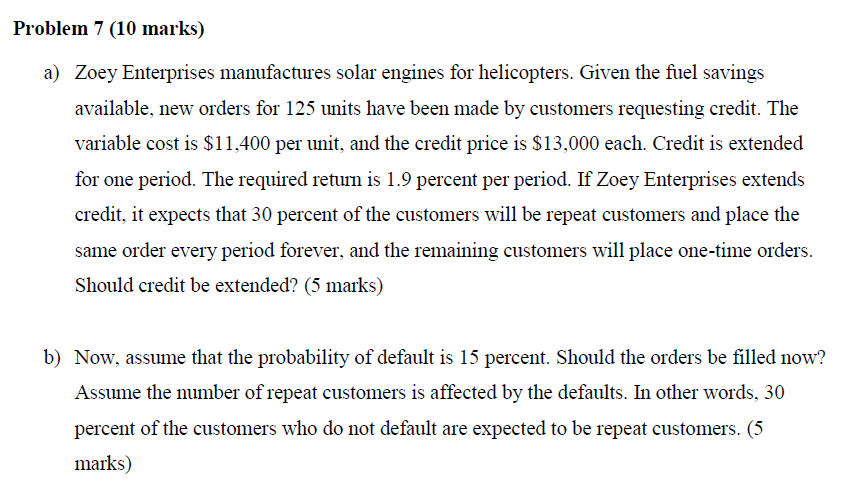
Problem 2 (20 marks) You are planning for your retirement. You expect to earn a monthly salary of $7,000 starting on the 1st month after you retire, which will be able to provide comfortably for your daily expenses through your retirement years. You are currently 33 and plan on retiring when you become 64, and you expect to live 20 years after retirement. In addition to providing a salary for your retirement you would like to buy a house by the time you reach 55. The house you dream of would cost you $1,650,000. Now you have a down payment of $50,000 (ignore closing costs). In addition you would like to offer yourself a retirement gift, a Mercedes that you would buy brand new to serve you through your retirement years. The car is expected to cost you $76,000. It will be purchased when you reach 64 years of age. Assume you can earn 12% compounded monthly from now until you retire, and the rate will change to 6% monthly compounding after that. a) How much should you save per month to be able to buy the car when you retire? (5 marks) b) How much should you save per month to be able to buy the house at the age of 55? (5 marks) c) Therefore, how much do you need to save in TOTAL per month if you can earn 12% compounded monthly from now till you buy your house taking into account your retirement expenses? (5 marks) d) And how much do you need to save in TOTAL per month after you buy your house until you retire taking into account your retirement expenses? (5 marks) Problem 3 (10 marks) You are evaluating a project for The Ultimate recreational tennis racket, guaranteed to correct that wimpy backhand. You estimate the unit sales price of The Ultimate to be $500 and sales volume to be 1,000 units in year 1; 1,250 units in year 2, and 1,450 units in year 3. The project has a three year life. Variable costs amount to $225 per unit and fixed costs, excluding depreciation, are $110,000 per year. The project requires an initial investment of $170,000 which is depreciated straight-line to zero over the three-year project life. The expected scrap value of the asset at the end of year 3 is $35,000. Net working capital investment is initially lowered by $80,000 and it will be fully replaced at the end of the project's life. The tax rate is 34% and the required return on the project is 10%. What is the NPV of this project? Accordingly what is your decision? Problem 4 (10 marks) The Smith Company has 10,000 bonds outstanding. The bonds are selling at 102% of face value, have a 8% coupon rate, pay interest annually, mature in 10 years, and have a face value of $1,000. There are 500,000 shares of 9% preferred stock outstanding with a current market price of $91 a share and a par value of $100. In addition, there are 1.25 million shares of common stock outstanding with a market price of $64 a share and a beta of .95. The most recent dividend paid by the company on the common stock was of $1.10 and it expects to increase those dividends by 3% annually forever. The firm's marginal tax rate is 35%. The overall stock market is yielding 12% and the Treasury bill rate is 3.5%. a) What is the cost of equity based on the dividend growth model? (2 marks) b) What is the cost of equity based on the security market line? (2 marks) c) What market weights should be given to the various capital components in the weighted average cost of capital computation? (3 marks) d) What is the weighted average cost of capital using the cost equity calculated based on CAPM? (3 marks) Problem 5 (5 marks) Daryl wishes to save money to provide for his retirement. He is now 30 years old and will be retiring at age 64. Beginning one month from now, he will begin depositing a fixed amount into a retirement savings account that will earn 12% compounded monthly. Then one year after making his final deposit, he will withdraw $100,000 annually for 25 years. In addition, and after he passes away (assuming he lives 25 years after retirement) he wishes to leave in the fund a sum worth $1,000,000 to his nephew who is under his charge. The fund will continue to earn 12% compounded monthly. How much should the monthly deposits be for his retirement plan? Problem 7 (10 marks) a) Zoey Enterprises manufactures solar engines for helicopters. Given the fuel savings available, new orders for 125 units have been made by customers requesting credit. The variable cost is $11,400 per unit, and the credit price is $13,000 each. Credit is extended for one period. The required return is 1.9 percent per period. If Zoey Enterprises extends credit, it expects that 30 percent of the customers will be repeat customers and place the same order every period forever, and the remaining customers will place one-time orders. Should credit be extended? (5 marks) b) Now, assume that the probability of default is 15 percent. Should the orders be filled now? Assume the number of repeat customers is affected by the defaults. In other words, 30 percent of the customers who do not default are expected to be repeat customers












